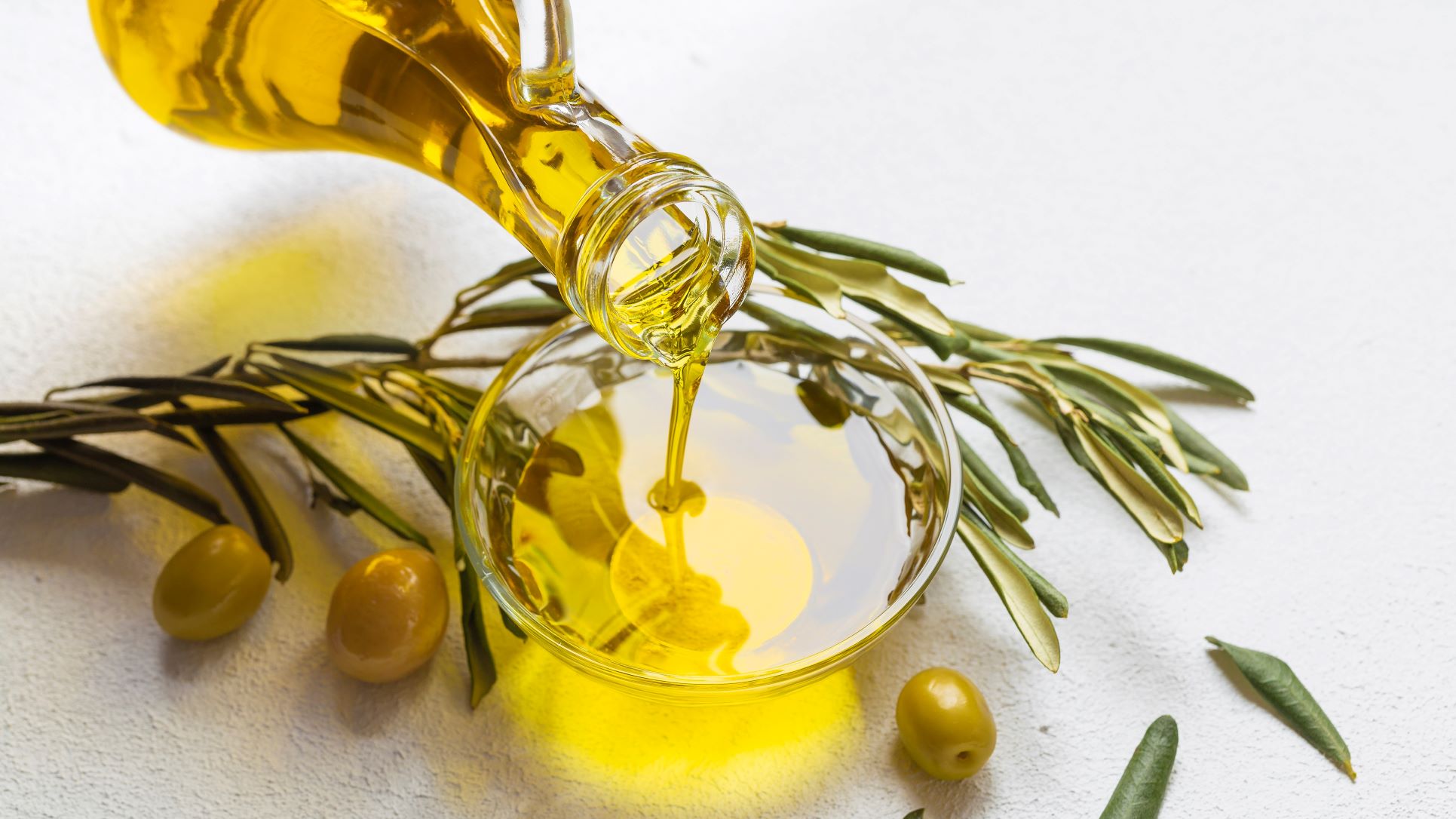What is dietary fat?
Not all dietary fat is bad.

Fat may not seem like something you want in your diet, but not all fat is bad. In the right form and right amount, dietary fat is an important nutrient for maintaining good health.
Dietary fat is one of the three macronutrients that make up the bulk of our diets, alongside protein and carbohydrates. Dietary fats usually enter our diet through consuming animal fats or in butters and oils used in a wide variety of food.
For decades health professionals blamed dietary fat for causing myriad health problems, including the obesity epidemic in America. But in recent years, studies have found that eliminating all fat from the diet doesn't entirely solve the problem, as certain types of fats are necessary for good health.
Related: Unsaturated vs. saturated fat: Which is better for your health?
Types of fat
There are four major types of dietary fats in foods: saturated fats, trans fats, monounsaturated fats and polyunsaturated fats.
Saturated fats are mainly found in animal sources such as meat or dairy, although some plant sources such as coconut oil can also contain saturated fats. A saturated fat is made up of chains of carbon atoms that are all bonded with hydrogen.
"Saturated fats are solid at room temperature," said Ximena Jimenez, a Miami-based nutritionist and national spokesperson for the Academy of Nutrition and Dietetics. She cited lard as an example. Other examples include:
Get the world’s most fascinating discoveries delivered straight to your inbox.
- Butter
- Ghee
- Coconut oil
- Cured meats
- Sausages
- Bacon
- Cheese
Overconsumption of saturated fats is one of the leading causes of obesity and related conditions in adults, according to a 2020 review published in the International Journal of Molecular Sciences.
Trans fats are a type of unsaturated fat that naturally occurs in milk and some meat products. Trans fats are also created through an industrial process that adds hydrogen to vegetable oil.
This process, called hydrogenation, binds extra hydrogen atoms to empty spaces along chains of carbon atoms that make up the fat. Unsaturated fats naturally have spaces along the chain of carbon atoms, instead of being full or ‘saturated’ with hydrogen atoms, and hydrogenation fills these spaces. This turns the liquid unsaturated fat into a stable solid by saturating it with hydrogen.
Restaurants often use trans fats in deep fryers because partially the hydrogenated oil does not have to be changed as often as regular oil. Trans fats also include margarine, shortening and olive oil spreads.
According to the Mayo Clinic, trans fats are the worst fats to eat. A diet high in trans fats increases the risk of heart disease because trans fats raise "bad" cholesterol and lower "good" cholesterol.
Examples include:
- Fried foods
- Commercial baked goods
- Frozen pizzas
- Crackers
- Margarine
Related: Cholesterol Levels: High, Low, Good & Bad
Monounsaturated fats are generally liquid at room temperature and contain one unsaturated carbon bond, or double bond in the molecule. The American Heart Association recommends eating monounsaturated and polyunsaturated fats in place of other sources of fat as much as possible. Unsaturated fats promote good cholesterol levels in your body and reduce levels of bad cholesterol, thus reducing the risk of heart disease.
Examples include:
- Olive oil
- Olives
- Peanut oil and canola oil
- Avocados
- Pumpkin seeds
- Pecan nuts
Polyunsaturated fats contain more than one double bond in their carbon chain, with empty spaces for hydrogen along the chain, making them unsaturated. Polyunsaturated fats include omega-3 and omega-6 fatty acids, which are found in a variety of animal and plant-based sources. Our bodies can't make omega-3 or omega-6, so it is important to consume enough of both fatty acids from dietary sources.
Related: The truth about omega-3 fatty acids
Polyunsaturated fats are found mostly in plant food sources, such as soybeans and soybean oil, sunflower oil, sunflower seeds, walnuts and flaxseeds. They’re also present in fatty fish like salmon, tuna, herring, mackerel and trout.
Why should we eat fat?
All fats provide nine calories per gram, but the quality, health benefits and risks vary hugely between types of dietary fat.
"Fat provides us with essential fatty acids which we cannot make in the body. It also enables us to store the fat soluble vitamins A, D, E and K," said Laura Clark, a registered dietician and nutrition consultant based in the U.K.
Related: Vitamin E: sources, benefits and risks
Related: Vitamin A: sources, benefits and deficiency
Dietary fat also helps keep hair and skin healthy, insulates the body, protects organs and fills fat cells, she said. Essential fatty acids in particular contribute to brain development, heart health and inflammation control.
How much fat should we eat?
For ages 2 and older, the USDA guidance for 2020-2025 recommends that less than than 10% of daily calorie intake should come from saturated fat. However, more than 70% of Americans consume more than this. According to the report, "The main sources of saturated fat in the U.S. diet include sandwiches, including burgers, tacos, and burritos; desserts and sweet snacks; and rice, pasta, and other grain-based mixed dishes."
Related: The science of cooking oils: Which are really the healthiest?
Yet eliminating too much fat can have serious health consequences, said Jennifer Fitzgibbon, a registered oncology dietitian at Stony Brook Hospital Cancer Center in New York. Too little fat in the diet increases the risk of vitamin deficiencies, she explained. "The vitamins A, D, E and K are fat soluble, meaning the body stores them in fatty tissue and the liver. The intestines need dietary fat to properly absorb these nutrients. These vitamins are also necessary for the health of your skin, bones and cardiovascular system, among other organs and systems."
Clark advises that while reducing saturated fat in our diets is definitely a good idea for health, avoiding replacing those fats with something else that's equally as unhealthy. "Replacing fat with whole grains and more fruit and vegetables is favorable for health," she said. "It's important that fat is not displaced by higher intakes of refined carbohydrate and sugar," which will also have a negative effect on health. "The balance of fats in the diet is key," she said.
Additional resources
- Read more about dietary fats and learn what to look for on nutrition labels from the U.S. Library of Medicine's MedlinePlus.
- Find more on the different types of fat from the Harvard School of Public Health.
- For tips on how to incorporate more healthy fats into your diet, check out HelpGuide.org.
This article is for informational purposes only and is not meant to offer medical advice.

Lou Mudge is a health writer based in Bath, United Kingdom for Future PLC. She holds an undergraduate degree in creative writing from Bath Spa University, and her work has appeared in Live Science, Tom's Guide, Fit & Well, Coach, T3, and Tech Radar, among others. She regularly writes about health and fitness-related topics such as air quality, gut health, diet and nutrition and the impacts these things have on our lives.
She has worked for the University of Bath on a chemistry research project and produced a short book in collaboration with the department of education at Bath Spa University.
- Kimberly HickokLive Science Contributor
- Jessie SzalayLive Science Contributor




